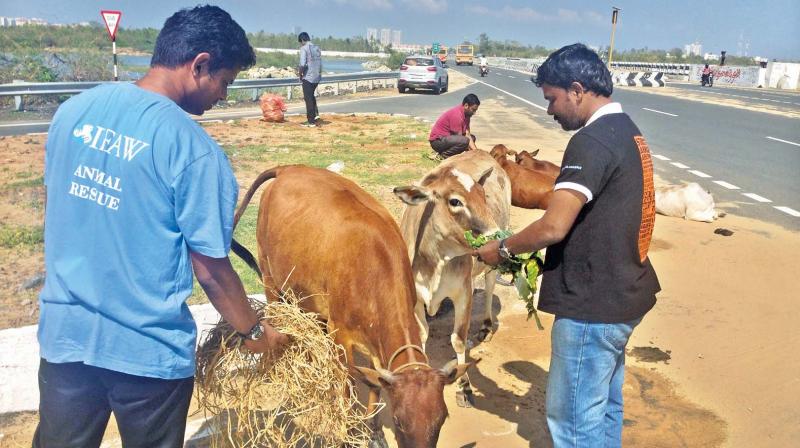Post Vardah, it's habitat loss for snakes, birds, deer
Wildlife authorities in Chennai and Kancheepuram are now busy rescuing stray animals.

Chennai: With water-logging and loss of greenery witnessed in many areas post Vardah, wildlife authorities in Chennai and Kancheepuram are now busy rescuing stray animals ranging from venomous snakes, mischievous monkeys and timid spotted deer. “Hit by cyclone Vardah, Chennai, which has a meagre 6.5 per cent of greenery has lost a lot of woody trees. With the reserve pockets like Guindy National Park, Vandalur reserve forest and Nangamangalam scrub jungle witnessing the habitat loss, there has been an increasing number of animals entering into human spaces since two days,” said GNP forester Clement Edison.
A forest official had said that the number of rescue calls has increased by over 100 per cent in the past two days. “We usually get three to four cases of snakes including Cobra. But after the rains, there are more calls, especially from OMR, Guduvancherry, Tambaram and Madipakkam,” confirmed the ranger attached to the city wildlife headquarters in Velachery, adding that they could not respond to many calls owing to mobile network issues.
Also, monkeys are out at Anna University and IIT-Madras, intruding into the classrooms. The massive deer population in Madras Christian College is also now in a state of shock after losing their greenery and feeding ground. “Having lost their habitat, monkeys are likely to seek shelter in the classrooms and hostels. It could lead to man-animal conflict with disastrous consequences like it happened in CMC Vellore, where a monkey was killed for intruding into the students’ hostel,” said former professor of Anna University, Chandrasekhar Viswanathan recollecting of how about 20 monkeys tried to enter a classroom on the college campus during the rainfall last year.
For deer and terrestrial birds in Madras Christian College and IIT-Madras, it is the resting and harbouring spaces that have been lost. “We need to initiate on conservation aspects. If the habitat is pollution free, honey bees and butterflies, which are ecosystem indicators, could be accommodated again,” said wildlife biologist and conservation scientist, A. Kumaraguru, member, Satymangalam Tiger Conservation Foundation.
“Food waste generated in the educational institutions can be used for feeding animals. As the skies have opened up, the ground vegetation, including shrubs and grass species would grow in less than 15 days – thus providing a nutrient feed to the ecosystem,” added Kumaraguru.

